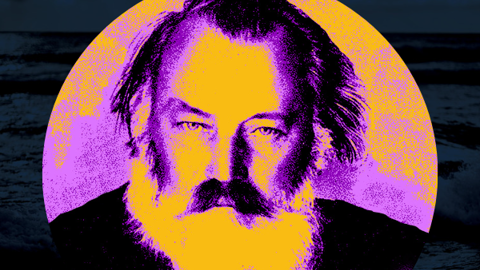LIMELIGHT March 2022 ★★★★ "Two Renaissance masterpieces are bookended with two contemporary Australian compositions"
It is extraordinary that a collection of notes scratched on extant manuscripts can erase half a millennium of science and art, war and pestilence, taking us back to simpler and more innocent times... The Song Company achieves this rewind in its Underground program, Rumours of Glory, performed by soprano Roberta Diamond (Principal Artist), mezzo-soprano Hannah Fraser (Emerita Artist) and baritone Hayden Barrington (Associate Artist). Principal Artist and tenor Dan Walker was indisposed and was replaced at the last minute by Artistic Director Antony Pitts... We hear harmony in its infancy, yet daringly, challengingly adventurous and sophisticated.
This collection of the ancient and the modern, has many facets, but one of the most exciting reveals is the sound of chromaticism in its many colours... The pews in the crypt of Sydney’s St Mary’s Cathedral are rearranged to encircle the singers who stand centrally, on its magnificent terrazzo floor tiles ornamented with an intricate Celtic cross design. They face each other at the four points of a square... Readings are delivered by Associate Music Director Francis Greep, walking amidst the audience, linking the many elements of the program. Crivici’s second motet, Dreams and Visions (2019), opens the program... The ensemble glides into Lassus’s Prophetiae Sibyllarum, a cycle of 12 madrigals for four voices in six pairs, giving voice to the sayings of the Sybils... Prophetiae Sibyllarum is one of the most challenging works by this giant of the late Renaissance. The ensemble nudges the boundaries of harmony and polyphony with restless changes in tonality, chromatic colouring and biting dissonance, aching to resolve to the familiar, but instead, venturing into even more new and wondrous sounds... a collection of madrigals which contains much profound academic material for study as well as the demands and pleasures of learning and expertly performing the music.
Interpolated into the six pairs of madrigals are the five movements of Josquin’s Missa Pange lingua, based on the Medieval Latin hymn Pange lingua gloriosi corporis mysterium... Josquin’s mastery and imagination maintain the freshness of the chant which the singers bring us with engaging purity. The texture and delivery of Josquin’s rhythmic, polyphonic and harmonic ideas are thrilling... There is a hushed beauty in the 'Et incarnatus est'. The soprano-alto moments in the Sanctus are a joy. The Hosanna is celebratory, culminating in a sublime Agnus Dei... Heather Percy’s Locus iste (after Bruckner) is cool and jazzy with diverging chromatics and harmonies which pivot on a pinpoint, seemingly ending suspended in thin air... it is an education and a pleasure to watch the ensemble with their use of gestures in communication, their craft and methodology, weaving a synchronised and crystalline sound that is fluid in line, graceful in phrasing and precise in articulation. (Shamistha de Soysa)
_____________________________________
THE SYDNEY MORNING HERALD March 2022 ★★★½ "A concert celebrating the French composer Josquin des Prez was saved at the last minute by Artistic Director Antony Pitts"
Sometimes called the 'Michelangelo of Music', Josquin was among the first celebrated masters of the Renaissance polyphonic style. Much studied by generations of musicians, this style has always represented a kind of perfection for its serene, transcendent spirit and its seamless blend of evenly matched voices in immaculate euphony. The Song Company belatedly noted the milestone [of the 500th anniversary of his death] in the sonorous glory of St Mary’s crypt with a performance of what is likely to have been Josquin’s last mass, the Missa Pange lingua, interspersed with the 12 motets of Prophetiae Sibyllarum by the late Renaissance master Orlande de Lassus... the pandemic tried its best to ruin this celebration as well, but in a courageous display of the show-must-go-on mentality, conductor and Artistic Director Antony Pitts leapt into the fray, mixing his intimate knowledge of the music’s harmonic and expressive purpose into the quartet...
The Song Company adopted natural, often lively speeds and avoided the long-note solemnity once associated with this music. Josquin’s mass was a pure delight, from the still balance of the Kyrie, to captivating soprano-alto duet in the Sanctus and the animated complexity of the Credo...
The Lassus motets interspersed glimpses of the uncanny drawing on strange chord shifts to highlight specific words and phrases. Crivici’s Dreams and Visions served as a polyphonic introduction to the program, hinting at fugal styles with floating contrapuntal lines in sorrowful minor mode. To close, Percy explored delicate dissonance and, after the consonant polish of the Renaissance music, the opening and closing of her Locus iste (after Bruckner) were like discovering the comforting warmth and unvarnished roughness of natural stone. (Peter McCallum)
_____________________________________


